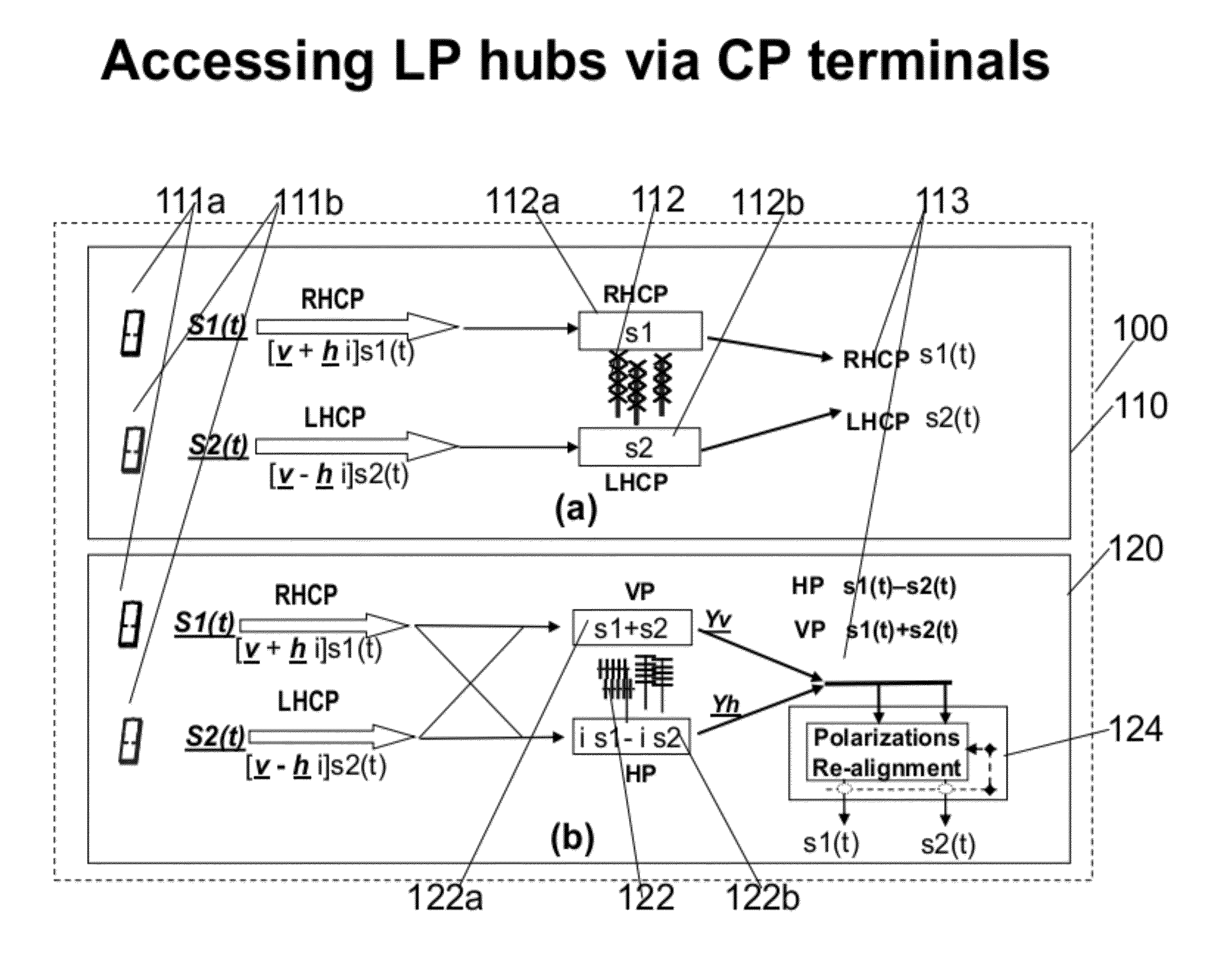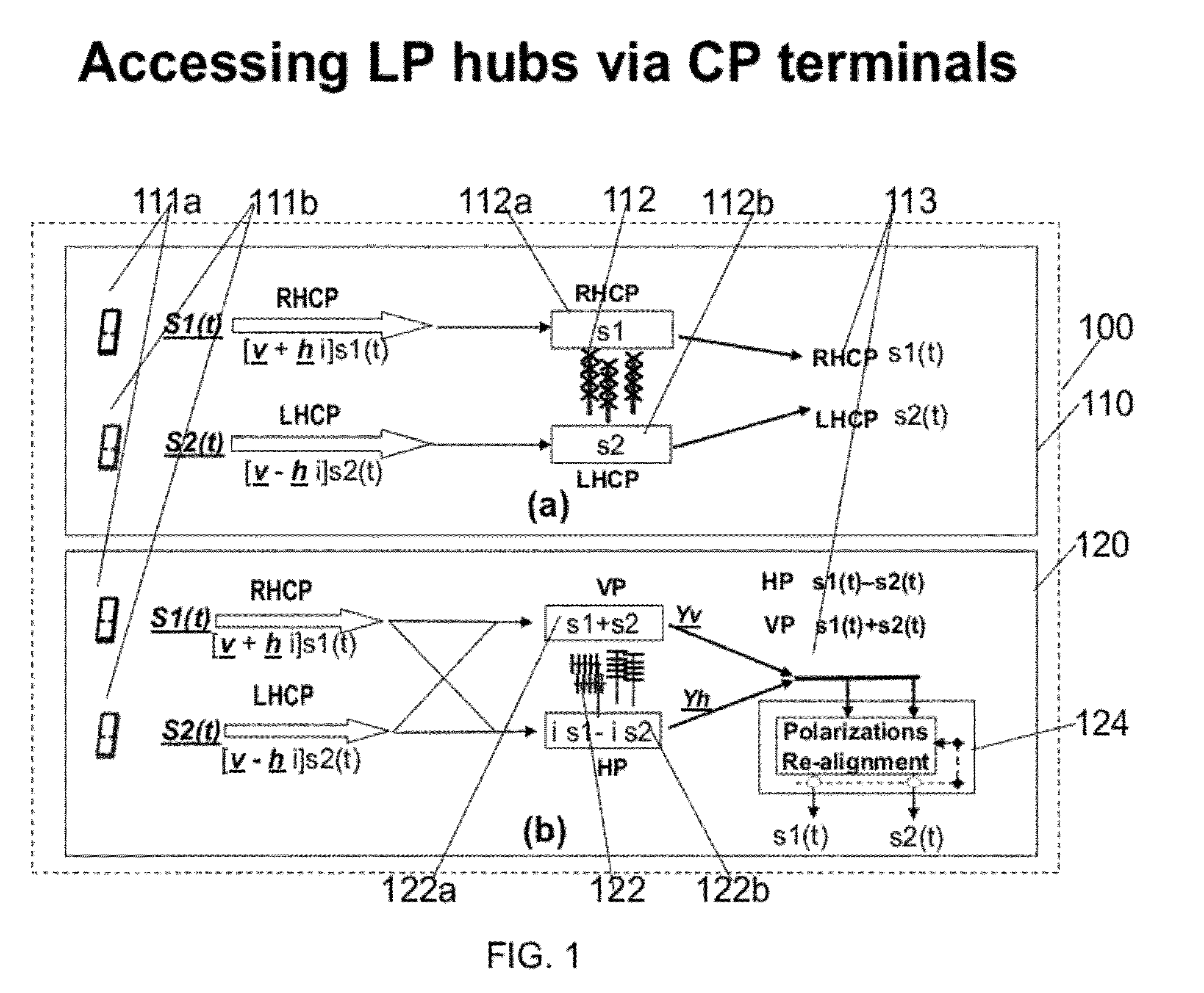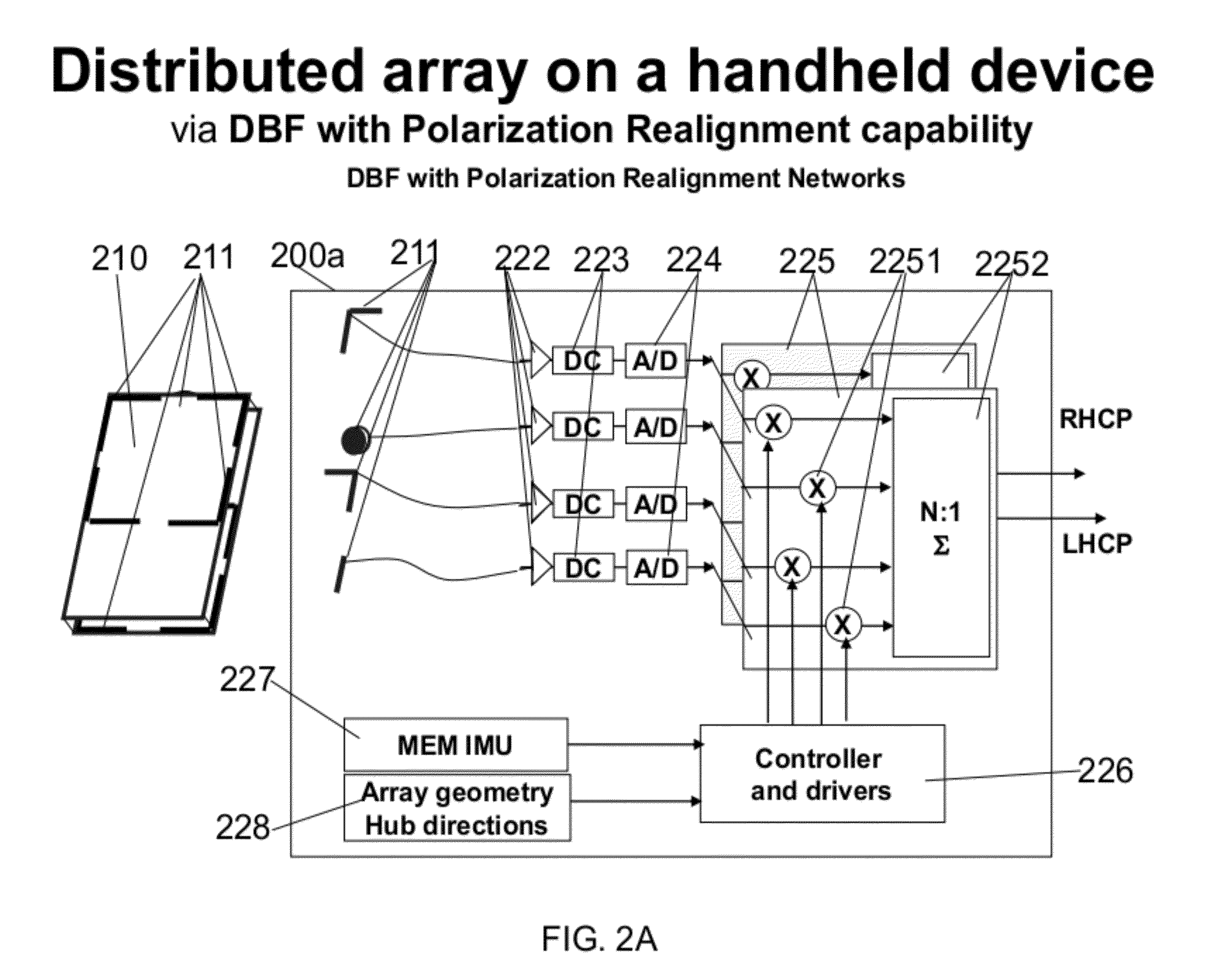Polarization Diversity with Portable Devices via Wavefront Muxing Techniques
a portable device and wavefront technology, applied in the field of terrestrial communications systems, can solve the problems of deteriorating the signal transmission in satellite-earth station links, affecting the efficiency of spectrum utility, and sacrificing spectrum utility efficiencies and capacity
- Summary
- Abstract
- Description
- Claims
- Application Information
AI Technical Summary
Benefits of technology
Problems solved by technology
Method used
Image
Examples
Embodiment Construction
[0045]FIG. 1100 illustrates particular embodiments of our proposed techniques, assuming that portable CP terminals are within a common field-of-view of both hubs. The terminals are return-links (RL) examples depicting communications from 2 portable devices to a hub.
[0046]Panel (a) 110 illustrates a conventional technique for accessing a CP communications hub asset 112 via CP terminals 111a and 111b. Terminals 111a and 2111b relay independent data streams s1(t) and s2(t) to CP hub 112. Terminal 1111a in right-hand circularly-polarized (RHCP) waveforms is allocated for RHCP channel 112a at frequency slot “fo” on the CP hub. Similarly, terminal 2111b in left-hand circularly-polarized (LHCP) waveforms is allocated for second CP channel 112b at the same frequency slot “fo” but in LHCP on the hub. As a result, s1(t) goes through a RHCP active channel while s2(t) is independently conditioned by another active channel in LHCP. The “active channel” performs low-noise amplifications, proper f...
PUM
 Login to View More
Login to View More Abstract
Description
Claims
Application Information
 Login to View More
Login to View More - R&D
- Intellectual Property
- Life Sciences
- Materials
- Tech Scout
- Unparalleled Data Quality
- Higher Quality Content
- 60% Fewer Hallucinations
Browse by: Latest US Patents, China's latest patents, Technical Efficacy Thesaurus, Application Domain, Technology Topic, Popular Technical Reports.
© 2025 PatSnap. All rights reserved.Legal|Privacy policy|Modern Slavery Act Transparency Statement|Sitemap|About US| Contact US: help@patsnap.com



